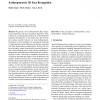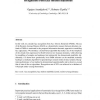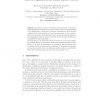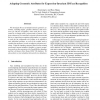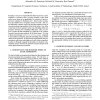18 search results - page 3 / 4 » Geodesic Distances for 3D-3D and 2D-3D Face Recognition |
IJCV
2010
12 years 11 months ago
2010
Abstract We present a novel anthropometric three dimensional (Anthroface 3D) face recognition algorithm, which is based on a systematically selected set of discriminatory structura...
IVC
2006
13 years 4 months ago
2006
In this work we consider face recognition from Face Motion Manifolds (FMMs). The use of the Resistor-Average Distance (RAD) as a dissimilarity measure between densities confined t...
ECCV
2004
Springer
14 years 6 months ago
2004
Springer
Recently, a 3D face recognition approach based on geometric invariant signatures, has been proposed. The key idea is a representation of the facial surface, invariant to isometric ...
SMI
2007
IEEE
13 years 10 months ago
2007
IEEE
We investigate the use of multiple intrinsic geometric attributes, including angles, geodesic distances, and curvatures, for 3D face recognition, where each face is represented by...
ICIP
2005
IEEE
14 years 6 months ago
2005
IEEE
Recently, it was proven empirically that facial expressions can be modelled as isometries, that is, geodesic distances on the facial surface were shown to be significantly less se...
